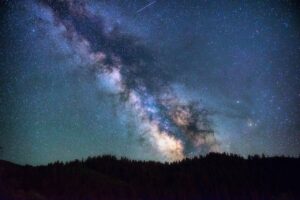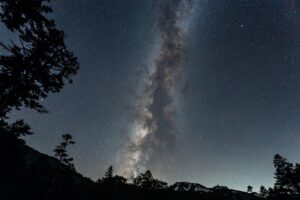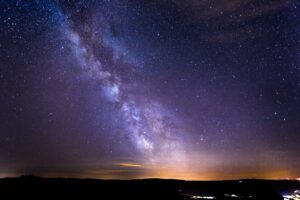Things to Do in The LHR / Attractions, Explore, News & Updates
Things to Do in The LHR / Attractions, Explore, News & Updates

Light pollution refers to excessive or misdirected artificial light at night. It’s most visible in urban areas, but even rural places aren’t immune. Over-lit parking lots, unshielded porch lights, and glaring streetlights all contribute to the haze that dims our view of the stars.
The good news? Light pollution is one of the easiest environmental issues to fix. Communities around the world, even large cities like Tucson, Arizona and Pittsburgh, Pennsylvania are proving it’s possible to reduce light pollution and still stay safe.

You might be wondering: What’s the big deal about a little extra light?
For People:
Artificial light at night can seriously disrupt our circadian rhythm, which regulates sleep, hormones, and overall well-being. Even exposure to low levels of nighttime light reduces melatonin production, which is linked to issues like insomnia, mood disorders, metabolic problems, and even some cancers.
Bright, poorly designed lighting also creates glare, making it harder to see at night which is dangerous for drivers, pedestrians, and wildlife alike. Newer LED streetlights often emit blue light, which is especially disruptive.
For Wildlife:
Many animals rely on natural light cues for navigation, reproduction, and feeding. Light pollution has well-documented effects on migrating birds, sea turtles, nocturnal animals, insects—including Pennsylvania’s own state insect, the firefly (lightning bug), and even plants! Studies are ongoing and the list of habitats and creatures negatively affected continues to grow.

It might seem like more light equals more safety, but that’s not always true. In fact, too much light can reduce safety by creating harsh shadows and blinding glares. A study in Chicago found that overly bright alleyways correlated with increased crime, and other research shows streetlights don’t significantly reduce accidents or crime, but they do rack up the bills.
According to DarkSky.org, unnecessary lighting in the U.S. generates 21 million tons of CO₂ each year—the equivalent of planting 875 million trees annually to offset the waste. By using smarter lighting, communities could cut outdoor lighting energy use by 60–70% and save billions.
You don’t have to overhaul your entire property to make a difference. Here are some simple steps from DarkSky.org:
Even if you can’t make changes immediately, keep these practices in mind for the future. Most of them will save money in the long run.
Here in the Lumber Heritage Region (LHR), we’re lucky to have incredible views of the night sky. Cherry Springs State Park—Pennsylvania’s first and only Dark Sky designated park—is a crown jewel of our region. But protecting our night skies takes continued awareness and advocacy.
LHR is proud to continue collaborating with Dark Sky PA, the PA Wilds Astronomy Club, the Oil Region Astronomy Club, and Cameron County in developing a Master Site Plan for a new night sky viewing area and educational hub. The plan, developed by Lardner/Klein Landscape Architects, has laid the groundwork for the county to provide a dedicated space to enjoy the stars, learn about the night sky, and foster conservation throughout the region.
This project was financed in part by a grant from the Community Conservation Partnerships Program and the Heritage Areas Program under the administration of the Pennsylvania Department of Conservation and Natural Resources, Bureau of Recreation and Conservation.
The night sky has guided humans for millennia—through navigation, farming, storytelling, and art. Yet today, 80% of Americans can no longer see the Milky Way from where they live.
This year, the Pennsylvania House of Representatives have formally recognized International Dark Sky week and invite Pennsylvanians to, “join us not only in observing and pondering upon this important week but also in raising awareness and support for protecting our precious naturally dark night sky”.
Together, we can preserve that sense of wonder for future generations. This International Dark Sky Week, we invite you to step outside, look up, and experience the awe of a truly dark sky. 🌌
https://darksky.org/what-we-do/darksky-approved/darksky-approved-luminaires-program/luminaires/
https://darksky.org/resources/public-outreach-materials/
https://drive.google.com/file/d/1CP3rcO8SNUOrnhdtSNrZOqcuYZ20s9Lc/view
https://drive.google.com/file/d/1nG0oOQpDmudUYguveLAk6nHBLkGJrtO7/view
https://drive.google.com/file/d/1Cv2qEoIcFi223PL12joHK2qH0gRYkuz_/view
https://drive.google.com/file/d/1oeEozZRz3IkI69UEv75WhYqmw2ayg0FI/view
© 2025 Lumber Heritage Region LLC | Website Designed & Hosted by Pixel & Hammer